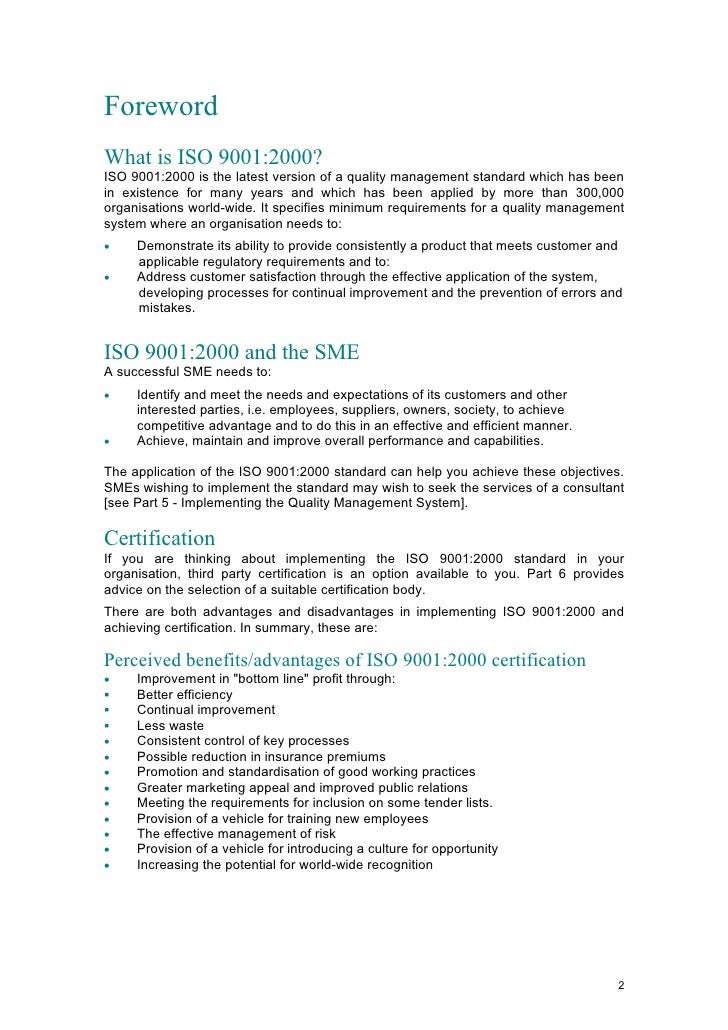Disadvantages Of Implementing Iso 9001
Jul 25, 2016 - Increased Control. ISO-9001 certification requires a high level of documentation that allows businesses to have a greater understanding of its processes. This gives them more control and reduces the uncertainty that many of today's companies struggle with when attempting to improve their customer satisfaction rates. Kommercheskoe predlozhenie obrazec rk 10. The most significant disadvantage of implementing ISO 9001:2000 as identified by a research performed on Spanish companies was the large amount of paperwork involved in implementation (Costa and Lorente 2004).
Sample Essay There are several advantages and disadvantages of obtaining ISO 9001:2000 certifications which are associated generally with value addition in quality of goods and services and relevant cost of completing standard criteria. The most significant advantage of the standard is increased level of customer satisfaction regarding goods and services. Another advantage is the decreased level of operating expenses work will not be repeated due to high quality. Other advantages of the standard include improvement in internal communication and increase in overall image of the company and the goods and services it sells (Blokdijk 2008). The most significant disadvantage of implementing ISO 9001:2000 as identified by a research performed on Spanish companies was the large amount of paperwork involved in implementation (Costa and Lorente 2004). There are also other problems and disadvantages of ISO 9001:2000 certification and implementation in organisations which include the large amount of time and money required for meeting the required criteria for certification (Clifford 2005). There is also a major problem of actual quality improvement in organisations as managers and employees only try to satisfy the quality auditor regarding specific quality requirements and actual emphasis on improving quality in processes is ignored (Seddon 2000).
Please go to the order form to order,,,,,, on this essay topic.

Photo by: contact ISO 9000 is a set of international standards of quality management that have become increasingly popular for large and small companies alike. 'ISO is grounded on the 'conformance to specification' definition of quality, ' wrote Francis Buttle in the International Journal of Quality and Reliability Management. 'The standards specify how management operations shall be conducted. ISO 9000's purpose is to ensure that suppliers design, create, and deliver products and services which meet predetermined standards; in other words, its goal is to prevent non-conformity.' Used by both manufacturing and service firms, ISO 9000 had been adopted by more than 100 nations as their national quality management/quality assurance standard by the end of 1997. Pesnyu peredelku pro druzhnij kollektiv. This quality standard was first introduced in 1987 by the International Organization for Standards (ISO) in hopes of establishing an international definition of the essential characteristics and language of a quality system for all businesses, irrespective of industry or geographic location. Initially, it was used almost exclusively by large companies, but by the mid-1990s, increasing numbers of small-and mid-sized companies had embraced ISO 9000 as well.